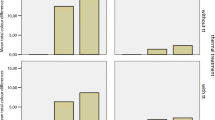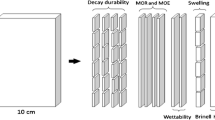Abstract
Koa wood is highly valued primarily because it has unique color, figure, and favorable working characteristics; however, little is known about its properties. Current information is inconsistent and is limited to few sources. Understanding the properties of diminishing old growth koa is important so that comparisons to planted koa can be made. Planted koa will serve as a substitute only if the value adding properties are present. This review reveals how difficult it is to characterize old growth and potentially plantation grown wood.

Similar content being viewed by others
References
Alden HA (1995) Hardwoods of North America. Gen Tech Rep FPL–GTR–83. US Department of Agriculture, Forest Service, Forest Products Laboratory, Madison, WI, pp 136
Baker PJ, Scowcroft PG, Ewel JJ (2009) Koa (Acacia koa) ecology and silviculture. Gen Tech Rep PSW–GTR–211. US Department of Agriculture, Forest Service, Pacific Southwest Research Station, Albany, CA, pp 129
Dudley N (2007) Acacia utilisation and management: adding value. In: Beadle CL, Brown AG (eds) RIRDC Publication No. 07/095, Rural industries research and development corporation, Canberra
Dudley N, Yamasaki J (2000) A guide to determining wood properties of Acacia koa. HARC Forestry Report No. 3. http://www.hawaiiag.org/harc
Forest Products Laboratory (2010) Wood handbook—Wood as an engineering material. Gen Tech Rep FPL–GTR–190. US Department of Agriculture, Forest Service, Forest Products Laboratory, Madison, WI, pp 508
Gerry E (1955) Koa or Koa-Ka. US Forest Serv., Forest Prod. Lab. Information Leaflet Foreign Woods, Rep. 2023, pp 8
Loudat TA, Kanter R (1996) The economics of commercial koa culture in Hawaii. Koa: a decade of growth. Prepared for the county of Hawaii, Department of Research and Development
Potter CB (2006) Acacia koa (koa) and Acacia koaia (koai’a). ver. 3. In: CR Elevitch (ed). Species profiles for Pacific Island Agroforestrv. Permanent agriculture resources (PAR), Holualoa, Hawaii. http://wwwtraditionaltree.org
Rock JF (1974) The indigenous trees of the Hawaiian Islands, 2nd edn. Charles E. Tuttle Company Inc., Rutland
Shi X, Brewbaker JL (2004) Genetic improvement of Hawaii’s premier hardwood, Acacia koa. Department of Tropical Plant and Soil Sciences. College of Tropical Agriculture and Human Resources, University of Hawaii. 3190 Maile Way, Honolulu, HI, 96822, USA
Skolmen RG (1974) Some woods of Hawaii, properties and uses of 16 commercial species. USDA Forest Serv Gen Tech Rep PSW-8. PSW For and Range Exp Stn Berkeley, CA, pp 30
Author information
Authors and Affiliations
Corresponding author
Rights and permissions
About this article
Cite this article
Wilton, I.A., Bond, B.H. & Dudley, N.S. Review of wood properties of Acacia koa A. Gray (koa). Eur. J. Wood Prod. 73, 121–126 (2015). https://doi.org/10.1007/s00107-014-0859-8
Received:
Published:
Issue Date:
DOI: https://doi.org/10.1007/s00107-014-0859-8




